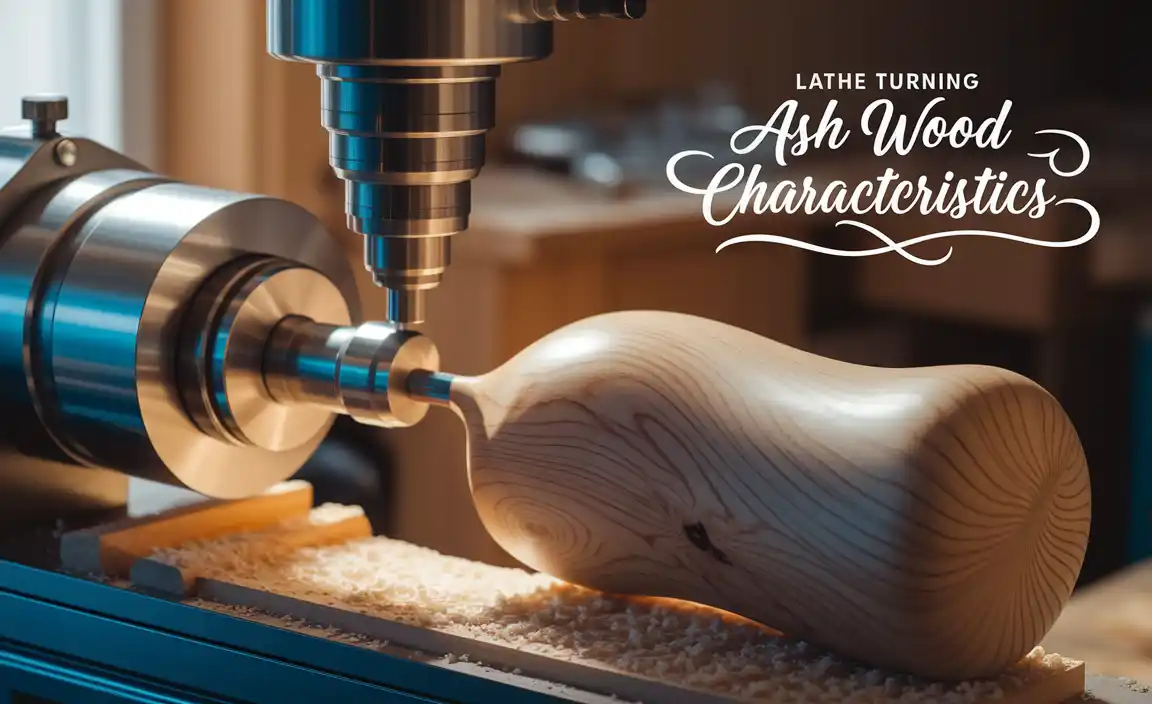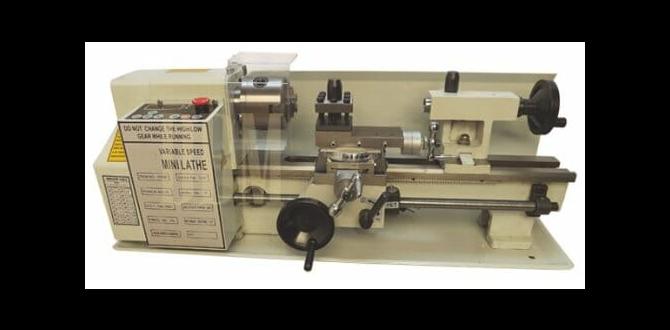Search Summary: A 3/16 inch carbide end mill, especially one with a reduced neck and 8mm shank, is a top choice for machining PEEK. Its precision, durability, and ability to handle PEEK’s unique properties make it ideal for tight tolerance applications.
Working with advanced materials like PEEK (Polyetheretherketone) can feel like a puzzle. You’ve got this fantastic, high-performance plastic, but getting clean, precise cuts from it on your mill can be tricky. Many beginners run into issues like melting, chipping, or just plain poor surface finish. It’s frustrating when your tools don’t seem up to the task, and you worry about damaging your workpiece. But don’t worry! The right tooling can make all the difference. Today, we’re diving into why a specific tool – the 3/16 inch carbide end mill – is often the “genius fit” for machining PEEK, especially when you need those super tight tolerances. We’ll walk through exactly what makes it special and how to use it effectively, so you can achieve professional results right in your own workshop.
Why PEEK is a Unique Challenge
PEEK isn’t your average plastic. It’s an engineering thermoplastic known for its incredible strength, stiffness, and resistance to high temperatures and harsh chemicals. Think of it as a metal alternative in many applications, like aerospace components or medical implants. Because of these amazing properties, it’s also quite tough to machine. Unlike softer plastics, PEEK has a high melting point and can be prone to thermal degradation if you don’t machine it correctly. This means heat buildup is your biggest enemy.
When machining PEEK, you need tools that can:
- Cut efficiently: To minimize friction and heat.
- Withstand heat: To avoid melting or deforming.
- Provide a clean surface finish: Essential for critical parts.
- Maintain accuracy: To achieve those tight tolerances.
Getting these four things right is the key to successful PEEK machining, and that’s where the right end mill comes into play.
The Carbide End Mill 3/16 Inch: What Makes It Special?
So, why is a 3/16 inch carbide end mill such a standout choice for PEEK? It boils down to the material of the tool itself and its dimensions. Let’s break it down:
1. Carbide Gets the Job Done
Carbide, specifically tungsten carbide, is the star of the show here. It’s an incredibly hard and wear-resistant material. This is crucial for machining tough plastics like PEEK because:
- Hardness: Carbide is much harder than steel, meaning it can cut through dense materials like PEEK without dulling quickly.
- Heat Resistance: Carbide can withstand higher temperatures than high-speed steel (HSS) tools. While you still need to manage heat, carbide doesn’t soften as easily, allowing for faster cutting speeds and better chip evacuation.
- Edge Retention: Because it stays sharper for longer, carbide maintains its cutting geometry, leading to more consistent and precise cuts over time. This is vital for achieving tight tolerances on your PEEK parts.
For more on cutting tool materials, you might find resources from organizations like the National Institute of Standards and Technology (NIST) helpful in understanding material properties and manufacturing processes.
2. The Power of 3/16 Inch
The 3/16 inch (approximately 4.76mm) diameter is a sweet spot for machining many PEEK components. Here’s why:
- Manageable Chip Load: Smaller diameter end mills generally mean smaller chip loads. This translates to less material being removed per tooth, which helps in controlling heat buildup. For PEEK, avoiding excessive heat is paramount to prevent melting and inaccuracies.
- Detail and Precision: A 3/16 inch end mill is excellent for creating intricate details, slots, and pockets. This size is often perfect for components that require fine features but still need the strength of PEEK.
- Versatility: It’s a common and very usable size for many projects, bridging the gap between very small engraving tools and larger roughing tools.
The “Genius Fit” for PEEK Specifics
Now, let’s put it all together for PEEK. When you combine a carbide end mill with a 3/16 inch diameter, especially when looking for that “genius fit for PEEK tight tolerance” capability, you might also encounter some specialized features that enhance its performance:
- Reduced Neck: Some 3/16 inch carbide end mills feature a “reduced neck” or “neck relief.” This means the shank (the part that goes into the collet) is slightly larger in diameter than the cutting flutes and the body of the end mill. This design is crucial because it prevents the shank from rubbing against the workpiece in deeper cuts or tight corners, allowing the cutting edges to work unimpeded and maintain accuracy. It’s a key feature for achieving those precision results required in demanding PEEK applications.
- 8mm Shank: Often, you’ll find 3/16 inch end mills paired with an 8mm shank. While 3/16 inch is a fractional imperial measurement, 8mm is a common metric shank size. This pairing is practical for workshops that use a mix of tool holders. An 8mm shank provides a robust connection for a 3/16 inch end mill, offering good rigidity and stability, which is essential when machining materials like PEEK.
- Number of Flutes: For PEEK, end mills with fewer flutes (like 2 or 3) are often preferred. More flutes can lead to faster material removal but also generate more heat and can pack chips more easily. For PEEK, which benefits from cooler machining and good chip evacuation, 2 or 3 flute end mills allow for adequate chip clearance and heat dissipation.
- Coating: While not always standard, some high-performance carbide end mills designed for plastics might have specialized coatings (like Zirconia or AlTiN, though dedicated plastic coatings are less common than for metals). These coatings can further reduce friction, increase tool life, and improve surface finish, making them even more ideal for PEEK.
Selecting the Right 3/16 Inch Carbide End Mill for PEEK
When you’re out shopping for the perfect tool, keep these specific characteristics in mind to ensure you get that “genius fit” for your PEEK projects:
Key Features to Look For:
- Material: Definitely carbide (Tungsten Carbide).
- Diameter: 3/16 inch (check for burr-free cutting edges).
- Shank Diameter: Often 8mm for a good balance of rigidity and compatibility.
- Neck Relief: Look for tools with a reduced neck if you anticipate deeper cuts or need to maintain clearance in corners. This is a big one for precision.
- Number of Flutes: 2 or 3 flutes are generally best for plastics like PEEK to manage heat and chip load.
- Geometry: A sharp, polished flute is ideal for plastics to prevent material from sticking.
- Helix Angle: A higher helix angle (e.g., 30-45 degrees) can help with chip evacuation and a smoother cut on plastics.
When searching online or in a tool catalog, you might use terms like: “3/16 inch carbide end mill 8mm shank reduced neck PEEK” or “plastic cutting end mill 3/16 carbide.” reputable manufacturers will often specify the materials their tools are best suited for.
Manufacturers and Brands to Consider:
There are many excellent tool manufacturers. For high-quality carbide end mills suitable for plastics like PEEK, consider brands known for precision machining tools. Some well-regarded names include:
- SGS Tool Company
- Guhring
- OSG
- Maritool
- Hass Precision Components (HPC)
- Niagara Cutter
Always check the specific product descriptions to ensure they are recommended for plastic machining and offer the features we’ve discussed (like reduced neck or polished flutes).
Setting Up Your Mill for Success
The best tool in the world won’t perform without proper setup and machining parameters. Here’s how to get your milling machine ready to tackle PEEK with your new 3/16 inch carbide end mill.
Spindle Speed and Feed Rate: The Balancing Act
This is where you manage heat. The goal is to cut quickly enough to keep chips forming and carrying heat away, but not so fast that you melt the material or overload the tool. For PEEK and a 3/16 inch carbide end mill, you’ll likely be in the following general range:
- Spindle Speed (RPM): Typically, you’ll want a higher RPM for plastics like PEEK compared to metals. A good starting point for a 3/16 inch end mill might be between 10,000 to 20,000 RPM, depending on your machine’s capabilities.
- Feed Rate (IPM or mm/min): This is the speed at which the tool moves into the material. A good starting range could be between 15 to 40 inches per minute (or approximately 380 to 1000 mm/min). You want to hear a consistent “hissing” or “shaving” sound, not a screeching or rubbing sound.
Data Table: Recommended Starting Parameters for 3/16″ Carbide End Mill on PEEK
| Parameter | Typical Range for PEEK | Notes |
|---|---|---|
| Tool Diameter | 3/16 inch (4.76 mm) | Carbide, polished flutes recommended. |
| Number of Flutes | 2 or 3 | For better chip clearance and heat dissipation. |
| Spindle Speed (RPM) | 10,000 – 20,000 RPM | Higher speeds help manage heat. Adjust based on tool and machine. |
| Feed Rate (IPM) | 15 – 40 IPM (approx. 380 – 1000 mm/min) | Listen for a crisp cutting sound. Adjust to avoid melting. |
| Depth of Cut (DOC) | 0.050″ – 0.100″ (approx. 1.2 mm – 2.5 mm) | Shallow cuts generate less heat. Engage gradually. |
| Width of Cut (WOC) | 50% – 75% of tool diameter | Especially for adaptive or trochoidal milling. Avoid full width for roughing. |
| Coolant/Lubrication | Dry or Air Blast | Avoid liquid coolants which can cause thermal shock or stickiness. Compressed air is best for chip evacuation and cooling. |
Disclaimer: These are starting points. Always consult your end mill manufacturer’s recommendations and fine-tune based on observation and test cuts.
Coolant and Chip Evacuation
For PEEK, liquid coolants are often a no-go. They can cause thermal shocks leading to cracking, or worse, mix with PEEK debris to create a gummy mess that sticks to the tool and workpiece. The best approach is usually:
- Compressed Air: A steady blast of compressed air directed at the cutting zone is ideal. It cools the material and blows chips away, preventing re-cutting and heat buildup. Many CNC machines have dedicated air blast ports.
- Vacuum: In some setups, a vacuum can help with chip removal, especially when combined with air.
Ensure your machine’s coolant system can be switched off or used just for air blast. For manual machines, a shop-vac hose positioned nearby can help, or simply allow chips to fall away freely while you monitor for buildup.
Tool Holding and Stability
A precise tool holder is non-negotiable for PEEK and tight tolerances. Use:
- High-Quality Collets: E-type collets (like ER collets) provide excellent runout accuracy and grip stability. Ensure your collet is clean and properly sized for the 8mm shank.
- Avoid Face-Wearing: Try to minimize face-milling operations where the end of the tool takes the primary cutting load. For PEEK, side-milling is generally more effective.
- Rigid Setup: Ensure your workpiece is clamped very securely. Any vibration or movement will ruin your tolerances and surface finish. Use appropriate workholding like vises, clamps, or fixtures.
Machining Strategies for Peak Performance
With the right tool and setup, how you actually cut the PEEK is the final piece of the puzzle.
Slotting and Pocketing
When creating slots or pockets, use a step-over that’s appropriate for your tool and desired finish. For PEEK:
- Step-over: A step-over of 50% to 75% of the tool diameter is common for finishing passes. For roughing, you might go a bit more aggressive, but always monitor for heat.
- Ramping: If your CAM software supports it, use ramping moves instead of plunging straight down. This allows the tool to enter the material at an angle, reducing the impact and the heat generated, which is crucial for plastics.
- Climb vs. Conventional Milling: For plastics, climb milling often provides a cleaner cut and better surface finish because the tool is pulling itself into the cut.
Contouring and Profiling
When cutting outlines:
- Adaptive/Trochoidal Milling: For removing large amounts of material in pockets, adaptive or trochoidal milling strategies are excellent. They use small step-overs and high feed rates with a larger depth of cut, creating a consistent chip load and more efficient heat management. Your 3/16 inch carbide end mill will excel here.
- Finishing Passes: Always leave a small amount of material (a few thousandths of an inch) for a final finishing pass. This pass should use a very light depth of cut and a slightly adjusted feed rate to achieve your ultimate tight tolerance and smooth surface finish.
Dimensional Accuracy and Tolerance
Achieving “tight tolerance” means your machined part is very close to its designed dimensions. With PEEK and a quality 3/16 inch carbide end mill:
- Tool Wear: Keep an eye on your end mill for any signs of wear. A worn tool will produce less accurate and potentially rougher surfaces.
- Thermal Expansion: PEEK has a coefficient of thermal expansion, meaning it will expand or contract slightly with temperature changes. If extreme precision is required, consider the ambient temperature of your workshop and allow parts to cool down before final inspection and measurement.
- Machine Calibration: Ensure your CNC machine is properly calibrated. Knowing your machine’s accuracy is key to knowing what tolerance you can realistically expect. Check out resources like Association For Manufacturing Technology (AMTMA) on calibration for deeper insights into machine precision.
Preventing Common PEEK Machining Mistakes
Even with the right tool, beginners







